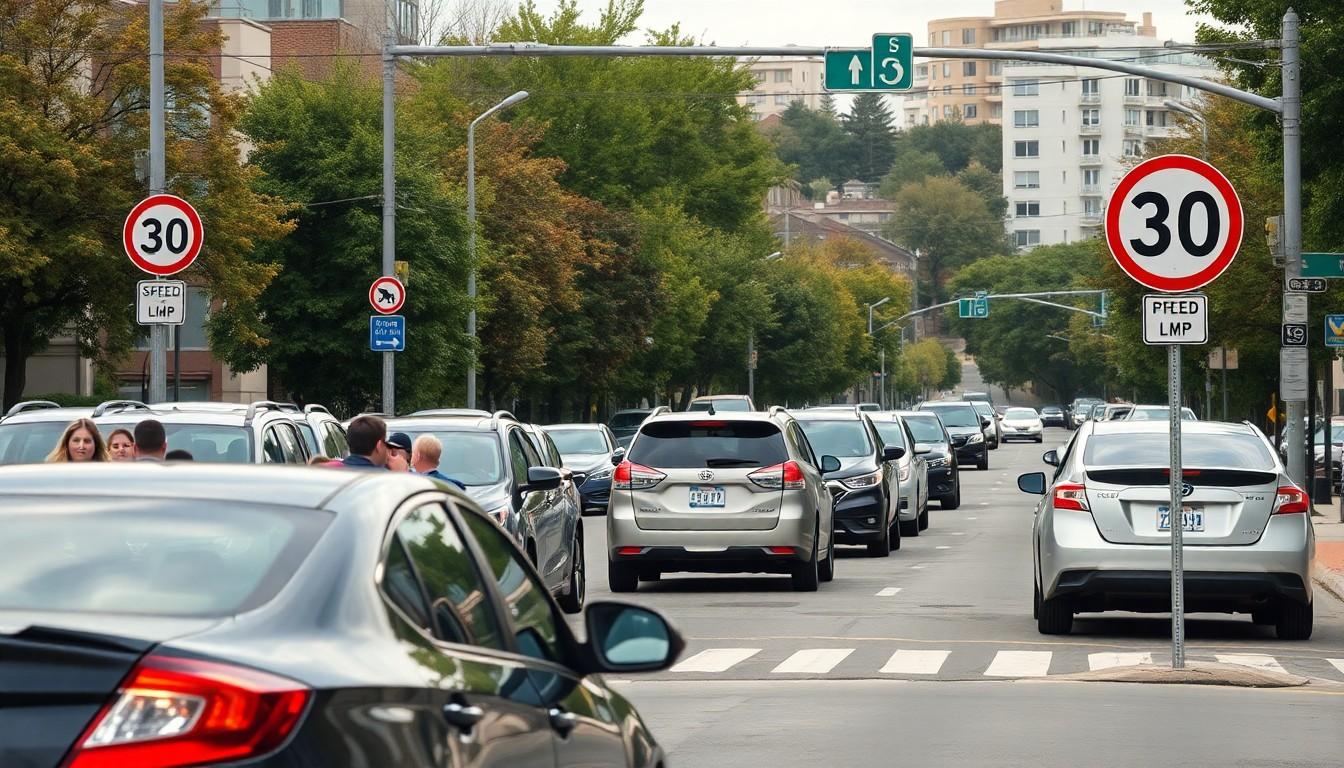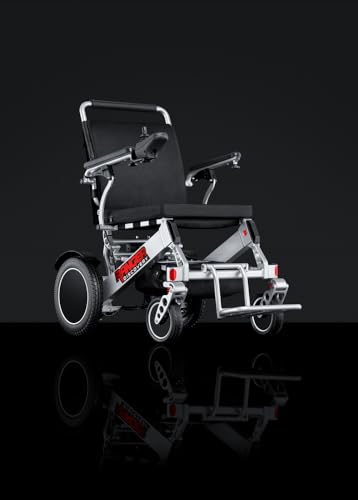Ever wondered how long it takes to cover a mile? Whether you’re planning your morning jog, calculating commute times, or training for a race, understanding how many minutes it takes to travel one mile can be incredibly useful.
We’ll break down exactly how long a mile takes across different activities – from walking and running to cycling and driving. The answer isn’t one-size-fits-all, as your pace, fitness level, terrain, and transportation method all play important roles in determining your time. Stick with us as we explore the typical timeframes for covering this common distance and help you set realistic expectations for your next mile journey.
Understanding the Relationship Between Distance and Time
Distance and time are fundamentally linked in movement calculations. Converting miles to minutes requires understanding the basic formula: time = distance ÷ speed. This relationship applies to all types of travel, whether walking, running, cycling, or driving.
Speed typically measures how far someone travels in a exact timeframe (miles per hour or kilometers per hour). For example, walking at 3 mph means covering 3 miles in 60 minutes, or 1 mile in 20 minutes. Running at 6 mph translates to completing a mile in just 10 minutes.
Mathematically, the formula works like this:
- To find time (in hours): Time = Distance (miles) ÷ Speed (mph)
- To convert to minutes: Time (in minutes) = Time (in hours) × 60
Various factors influence the time-distance relationship:
- Mode of transportation: Cars travel faster than bicycles, which move quicker than pedestrians
- Terrain conditions: Uphill sections slow progress while downhill segments increase speed
- Weather elements: Headwinds create resistance; tailwinds provide assistance
- Traffic patterns: Congestion extends travel times in urban environments
- Individual fitness: Athletic ability affects sustainable speeds for human-powered movement
Understanding this relationship helps with practical applications like planning commutes, setting workout goals, and estimating arrival times. The next sections explore exact timeframes for completing a mile across different activities.
Factors That Determine Walking Pace

Walking pace varies significantly from person to person due to several key factors. Understanding these variables helps explain why different individuals complete a mile in varying timeframes.
Age and Physical Fitness
Age and physical fitness levels significantly impact walking speed. Older adults typically walk at slower paces than younger individuals, with those over 50 considering a mile completed in under 27-28 minutes as a good benchmark. Physical fitness plays an equally important role in determining pace, as regular exercisers maintain faster walking speeds than sedentary individuals. A healthy adult without any underlying health conditions generally completes a mile in about 14 to 21 minutes. Chronic health issues, muscle strength, and cardiovascular endurance all contribute to variations in walking pace across different demographic groups.
Terrain and Elevation
The physical environment dramatically affects walking speed and effort required. Walking uphill naturally slows pace as the body works against gravity, potentially adding several minutes to a mile time. Uneven surfaces like trails, sand, or gravel create additional resistance compared to smooth sidewalks or tracks. Weather conditions introduce further variables – wet, slippery surfaces demand cautious navigation, while strong headwinds create resistance that reduces forward momentum. Temperature extremes tax the body’s energy systems, with excessive heat or cold forcing most walkers to adopt more conservative paces for safety. The 15-22 minute average mile time established in the 2019 study assumes relatively flat, obstacle-free conditions.
Average Walking Speed for Different Individuals

Walking speed varies significantly among different people based on fitness level, age, and purpose of walking. Research from a 2019 study indicates most individuals complete a mile in 15-22 minutes, with average walking paces ranging from 2.5 to 4 miles per hour.
Casual Walking Speed
An easy-paced walk typically takes about 20 minutes per mile for a healthy adult. Beginners, older adults, and those new to fitness generally maintain this more relaxed pace of around 20 minutes per mile. This casual walking speed allows individuals to maintain conversations comfortably while moving and doesn’t significantly elevate heart rate. Many people naturally adopt this pace during everyday activities like shopping or leisure walks.
Fitness Walking Speed
Moderate-paced walking, often recommended by fitness experts, completes a mile in approximately 15 minutes. This pace requires more effort and engages more muscle groups for an effective workout. Competitive or physically fit walkers can achieve fast-paced walking speeds, covering a mile in just 11 minutes. Step cadence also measures walking intensity – moderate walking registers around 100 steps per minute, while brisk walking ranges from 100-119 steps per minute. Fitness walking serves as an excellent cardiovascular exercise that’s accessible to most people without specialized equipment or training.
Running a Mile: Typical Timeframes

Running a mile serves as a common benchmark for fitness assessment and personal achievement. Many fitness enthusiasts, athletes, and casual exercisers track their mile times to gauge improvements in cardiovascular health and overall endurance.
Average and Noncompetitive Runners
Noncompetitive, relatively in-shape runners typically complete one mile in about 9 to 10 minutes. This pace represents a comfortable rhythm that’s sustainable for individuals who maintain moderate fitness levels without specialized training. Those new to running often finish a mile in 12 to 15 minutes as they gradually build their endurance and strengthen their cardiovascular system. These timeframes provide realistic expectations for recreational runners who exercise for health benefits rather than competitive purposes.
Beginner Runner Times
Beginners usually take 12 to 15 minutes to complete a mile during their early running journey. This slower pace allows novice runners to develop proper form, build necessary muscle strength, and improve respiratory efficiency without risking injury or burnout. First-time runners shouldn’t feel discouraged by these initial times, as consistency leads to natural improvement. Starting with a run-walk method helps beginners gradually increase their running duration while decreasing walking intervals, eventually leading to continuous running and faster mile times.
Professional Runner Pace
Elite runners demonstrate remarkable speed, averaging mile times of 4 to 5 minutes during marathon competitions. Professional athletes achieve these impressive times through years of dedicated training, optimized nutrition, and strategic race planning. The current mile industry record stands at 3:43.13, set by Moroccan runner Hicham El Guerrouj in 1999 – a testament to extraordinary human performance. Across all ages and genders, the average mile time is approximately 7:04 minutes, while the fastest recorded mile (not counting the industry record) is 4:08 minutes. These elite performances illustrate the important gap between professional and recreational runners, highlighting the specialized training required to achieve such speeds.
Cycling One Mile: Expected Duration

Cycling speeds vary significantly based on individual fitness and environmental conditions, affecting how quickly you’ll cover a one-mile distance. Most casual cyclists complete a mile in 4 to 6 minutes when pedaling at speeds between 9 and 14 mph. This timeframe represents a comfortable pace for the general population and accounts for typical riding conditions on relatively flat terrain.
Average Cycling Times by Speed
| Speed | Time to Complete One Mile |
|---|---|
| 10 mph (16 km/h) | 6 minutes |
| 15 mph (24 km/h) | 4 minutes |
Factors Affecting Cycling Speed
Many elements influence how quickly you can cycle a mile. Fitness level plays a primary role in determining your sustainable pace, with experienced cyclists maintaining higher speeds than beginners. The type of bicycle – whether a road bike, mountain bike, or cruiser – significantly impacts efficiency and maximum speed. Environmental conditions such as headwinds, rain, or extreme temperatures can slow progress considerably. Terrain variations like hills, rough surfaces, or gravel paths require more effort and typically reduce average speed compared to smooth pavement.
Performance Benchmarks
Performance metrics provide useful reference points for cyclists of different abilities. A strong benchmark across all age groups and genders is approximately 2:56 minutes per mile. Men typically achieve slightly faster times, with a good average around 2:48 minutes per mile. These accelerated times generally reflect the performance of fitness enthusiasts and regular cyclists rather than casual riders. Traffic conditions, especially in urban settings, create additional variables that can extend cycling times regardless of individual capability.
Driving Time for One Mile in Various Conditions

Driving times for one mile vary significantly based on speed limits and traffic conditions. Using the formula time = distance ÷ speed, we can calculate exactly how long it takes to drive one mile at different speeds.
Urban Driving
Urban driving involves handling through city streets with lower speed limits and frequent stops. At 30 mph, a common speed limit in residential areas, drivers complete one mile in exactly 2 minutes. Slower urban traffic moving at 25 mph requires approximately 2.4 minutes to cover the same distance. Congested city conditions often reduce speeds to 15 mph, extending the one-mile drive time to about 4 minutes. These calculations help commuters estimate travel times accurately when planning urban routes.
Highway Conditions
Highway driving allows for higher speeds, significantly reducing the time needed to travel one mile. At 60 mph, a standard highway speed limit, drivers cover one mile in exactly 1 minute. Moderate highway speeds of 50 mph result in approximately 1.2 minutes per mile. Traveling at 40 mph takes exactly 1.5 minutes to drive a mile, while 35 mph requires about 1 minute and 43 seconds. Slower highway conditions at 20 mph extend the one-mile drive time to exactly 3 minutes, and crawling traffic at 10 mph results in a 6-minute mile. These time calculations prove essential for estimating arrival times during highway travel.
Practical Applications for Mile-to-Minute Conversions

Running and Fitness
Mile-to-minute conversions form the foundation of effective training programs for runners and fitness enthusiasts. Athletes frequently use pace calculations to track performance improvements and establish realistic goals. For instance, a runner targeting a 7-minute mile needs to maintain approximately 8.57 mph (60 ÷ 7 = 8.57 mph). These pace metrics allow runners to structure interval training, where exact speeds are maintained for set distances. Coaches use these conversions to create progressive training plans that gradually decrease mile times while building endurance.
Racing and Sports
Race strategists rely heavily on mile pace calculations to optimize competitive performance. In motorsports, understanding that a vehicle traveling at 145 mph covers a mile in just 0.41 minutes (60 ÷ 145 ≈ 0.41 minutes) helps teams plan pit stops and fuel consumption. Marathon runners use mile splits to maintain consistent energy expenditure throughout long races. Cyclists determine optimal cadence and gear selection based on target mile times. These precise time-to-distance ratios enable athletes to maximize efficiency and develop strategic race plans that account for course variations.
Everyday Activities
Daily life presents many scenarios where understanding mile-to-minute conversions proves valuable. Commuters walking at 3 mph know they’ll need 20 minutes to cover one mile (60 ÷ 3 = 20 minutes), helping them plan departure times accurately. Hikers use pace estimations to calculate how long trail segments will take and ensure they complete routes before sunset. Parents timing school walks can determine if children have sufficient time to reach their destination. Delivery services optimize routes based on these calculations to provide accurate arrival time estimates. Urban planners even consider average walking speeds when designing pedestrian-friendly infrastructure and timing crosswalk signals.
Conclusion
Understanding how long it takes to travel a mile empowers us to make better decisions about transportation exercise and time management. Whether you’re walking at a casual 3 mph brisk fitness pace or driving on the highway your mile time serves as a practical metric for planning daily activities.
We’ve seen that mile completion times vary dramatically from 1 minute driving on highways to 20+ minutes walking depending on many factors like terrain fitness and environmental conditions. These benchmarks aren’t just numbers but valuable tools for setting realistic goals establishing workout routines and planning efficient travel.
By applying these concepts to your daily life you’ll gain more control over your schedule and better appreciate the relationship between distance speed and time in all your movements.
Frequently Asked Questions
How long does it take to walk a mile?
For most people, walking a mile takes between 15-22 minutes, assuming flat terrain and good conditions. Casual walkers typically complete a mile in about 20 minutes (3 mph), while fitness walkers can do it in around 15 minutes (4 mph). Older adults may take 25-30 minutes, with under 28 minutes considered good for those over 50. Factors like terrain, weather, and personal fitness significantly affect walking time.
What affects walking speed?
Walking speed is influenced by several key factors: age (younger adults typically walk faster), physical fitness (regular exercisers maintain faster paces), terrain (uphill or uneven surfaces slow you down), weather conditions (rain or strong winds create resistance), and walking purpose (casual strolls versus fitness walking). Step cadence also matters, with moderate-intensity walking registering around 100 steps per minute.
How long does it take to run a mile?
Running times vary widely based on fitness level. Beginners typically complete a mile in 12-15 minutes as they build endurance. Casual but relatively fit runners average 9-10 minutes per mile. Competitive recreational runners might achieve 7-8 minutes, while elite runners can finish in 4-5 minutes. The current world record stands at an impressive 3:43.13.
How long does it take to cycle one mile?
Most casual cyclists complete a mile in 4-6 minutes, pedaling at speeds between 9-14 mph. More experienced cyclists can maintain 15-20 mph, finishing a mile in 3-4 minutes. Elite cyclists might exceed 25 mph on flat terrain. Cycling speed depends on fitness level, bicycle type (road bikes are faster than mountain bikes), terrain (hills slow you down), and weather conditions.
How long does it take to drive one mile?
Driving time varies significantly based on speed limits and traffic conditions. In urban areas with a 30 mph limit, you’ll cover a mile in 2 minutes under ideal conditions. In congested city traffic at 15 mph, expect about 4 minutes. On highways at 60 mph, a mile takes just 1 minute. Remember that traffic lights, congestion, and road conditions can significantly extend these times.
How is speed calculated for a mile?
Speed is calculated using the formula: time = distance ÷ speed. For a mile, you can determine how long it will take by dividing 1 (mile) by your speed. For example, walking at 3 mph means a mile takes 1 ÷ 3 = 0.33 hours, which converts to 20 minutes. This basic relationship applies to all forms of movement and helps in planning commutes and setting workout goals.
Why is knowing mile completion time important?
Understanding mile completion times helps with practical daily planning like estimating commute durations, setting realistic fitness goals, and training effectively for races or events. For runners and cyclists, it provides a benchmark to track improvement. Urban planners use average walking speeds when designing pedestrian infrastructure, and anyone planning outdoor activities benefits from accurate time estimates.
What’s a good walking pace for fitness?
A good walking pace for fitness is around 3-4 mph, which means completing a mile in 15-20 minutes. This pace elevates your heart rate sufficiently for cardiovascular benefits while remaining sustainable for longer distances. Aim for a step cadence of about 100 steps per minute, which indicates moderate-intensity activity. As fitness improves, you can gradually increase your pace.
How can I improve my mile time?
To improve your mile time, implement consistent training with a mix of techniques: regular practice at your target pace, interval training (alternating between high and lower intensities), strength training to build muscle power, proper warm-ups and cool-downs, gradual progression (increase pace by no more than 10% weekly), and adequate recovery between intense sessions. Track your progress to stay motivated.
How does terrain affect mile completion time?
Terrain significantly impacts how quickly you can cover a mile. Uphill sections can slow walking pace by 25-50% depending on the grade, while downhill sections might increase speed by 10-15% (though steep descents require careful foot placement). Uneven surfaces like trails or sand require more energy and reduce speed by 20-30%. Even minor elevation changes can add minutes to your mile time.











